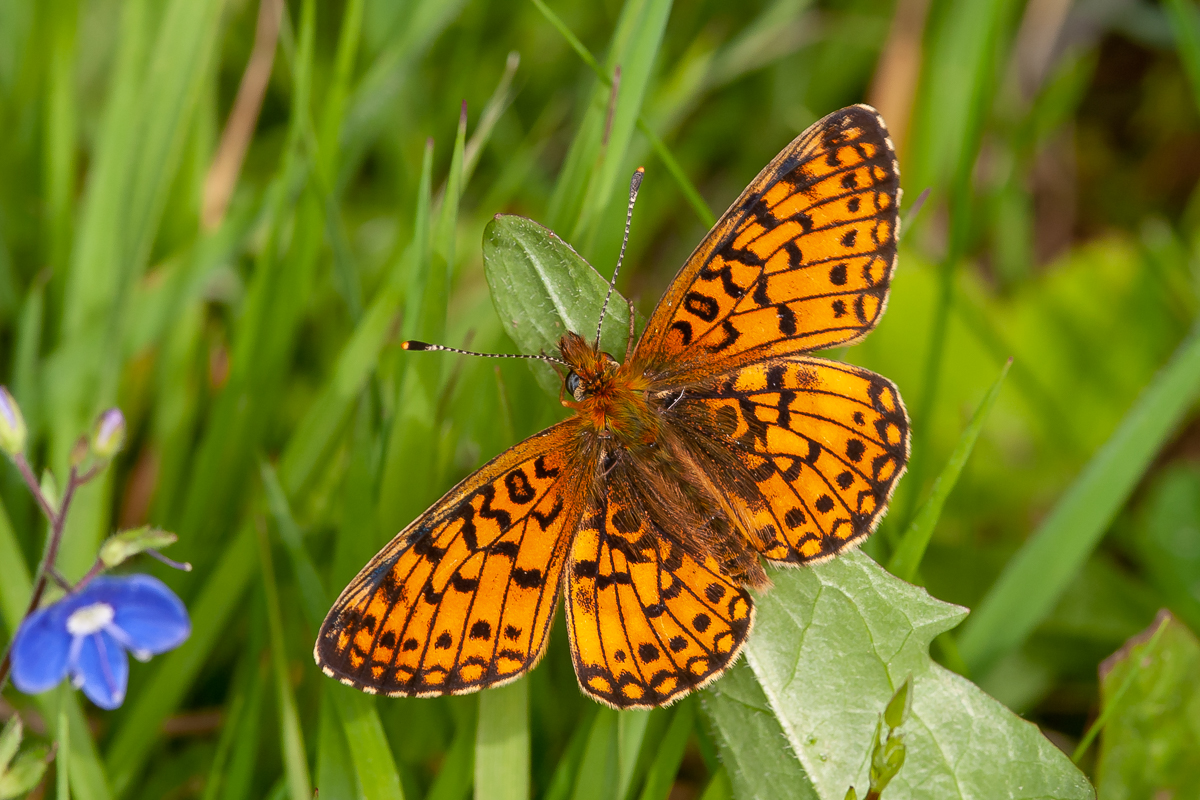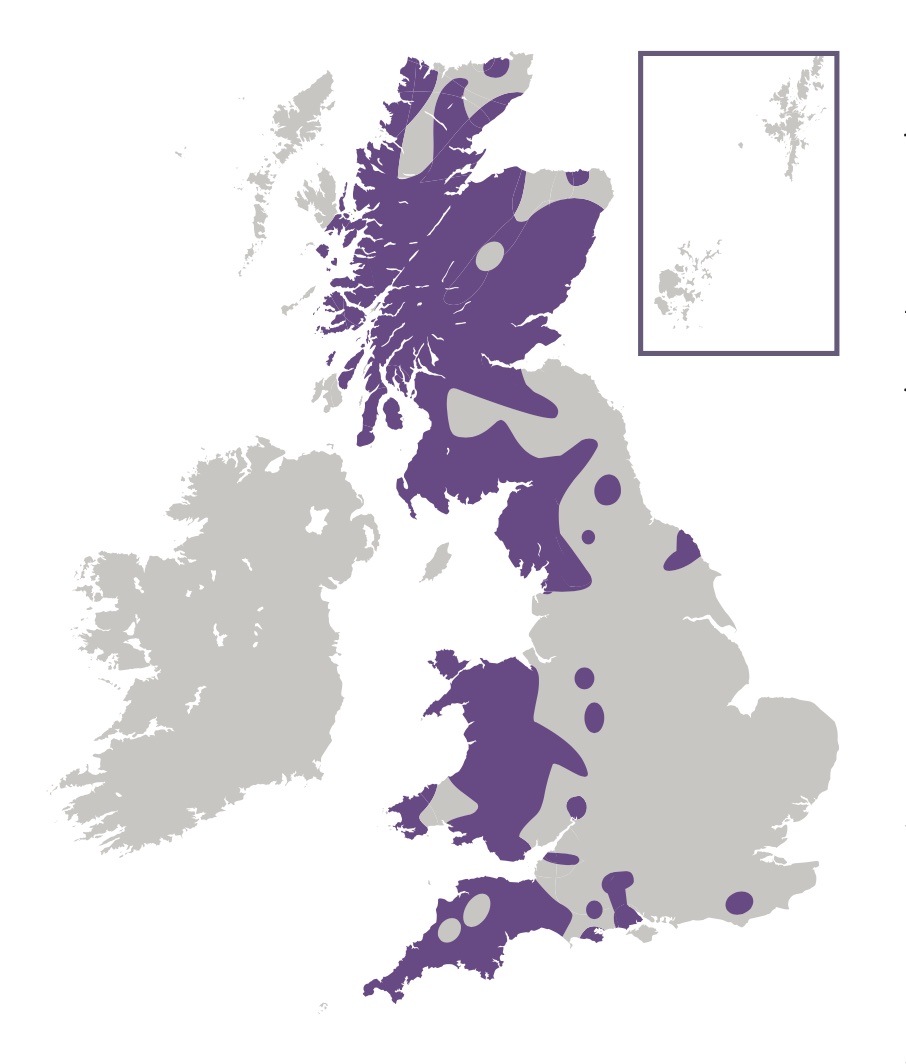
Photo © Peter Eeles
The Small Pearl-bordered Fritillary is a delightful butterfly found in discrete colonies. Patrolling males can be seen flying a couple of feet from the ground, alternating a burst of rapid wing beats with a short glide, searching out freshly-emerged females in the surrounding scrub. The wing pattern, however, makes the adult butterfly difficult to follow in flight, it being much easier to observe this species when it is basking or nectaring on flowers of Bugle and other plants.
This butterfly, like the Pearl-bordered Fritillary, gets its name from the series of "pearls" that run along the outside edge of the underside of the hindwing. The two species may be seen together at certain sites, although the Pearl-bordered Fritillary emerges a couple of weeks before the Small Pearl-bordered Fritillary and generally appears much paler as a result. This strongholds of this species are found throughout much of Scotland and Wales, and in the north-western and south-western counties of England with scattered colonies elsewhere. It is absent from the Outer Hebrides, Orkney, Shetland, Ireland, the Isle of Man and the Channel Islands. This butterfly is found in discrete colonies containing anything between a couple of dozen and 100 adults at peak.
The male butterfly can be seen patrolling low over the breeding sites in search of a mate. When a virgin female is found, the pair quickly mate and generally remain hidden low down in vegetation. Egg-laying females are easy to follow as they flutter slowly and deliberately low down over vegetation, searching out suitable areas of foodplant on which to lay. Both sexes are avid nectar feeders, and can be seen at flowers of Bugle, Buttercup, Bird's-foot Trefoil, Wood Spurge, Ragged-robin and other plants.

Most English colonies are found in open areas within deciduous woodland, such as woodland clearings. These colonies are generally small, consisting of a few dozen adults at most, and this butterfly is also relatively-sedentary with only a limited capacity for colonising new areas. Colonies in the north are also found in more exposed situations such as marshland and moorland. These are larger colonies of up to 100 individuals, typically spread across extensive areas of land and butterflies in these colonies are relatively-mobile as a result. In Cornwall, colonies occur on moorland and cliffs. At all sites damp areas are preferred, where the foodplants grow particularly vigorously.
Adults feed primarily on Bugle (Ajuga reptans). Bluebell (Hyacinthoides non-scripta), buttercups (Ranunculus spp.), Common Bird's-foot-trefoil (Lotus corniculatus), dandelions (Taraxacum spp.), hawkweeds (Hieracium spp.), heathers (Calluna and Erica spp.), Ragged-Robin (Silene flos-cuculi), thistles (Carduus spp. and Cirsium spp.), Wild Thyme (Thymus drucei) and Wood Spurge (Euphorbia amygdaloides) are also used.
The primary larval foodplants are Common Dog-violet (Viola riviniana) and Marsh Violet (Viola palustris).
